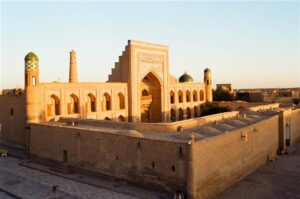Ubiquitously Uzbekistan – The Kunya Ark of Khiva and Sunset Views
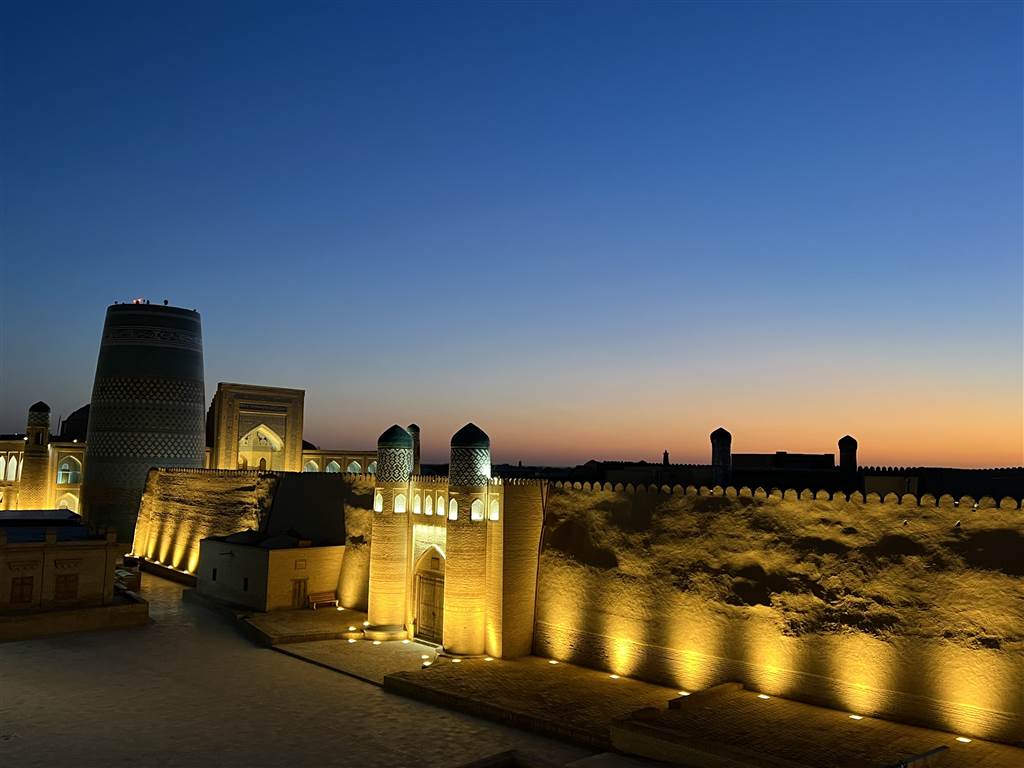
We strolled through more of the old town of Khiva, and came upon a little coppersmith shop.
The small shop displayed many goods of interests, a humble collection of finished products and some were work-in-progress. The coppersmith was playing with some of his instruments when we went in. Seeing that there were visitors, he immediately came to us and showed us his crafts. He did eventually understand that we were really “just lookin.” To our surprise, instead of leaving us alone, he began firing up his tools for a demonstration.
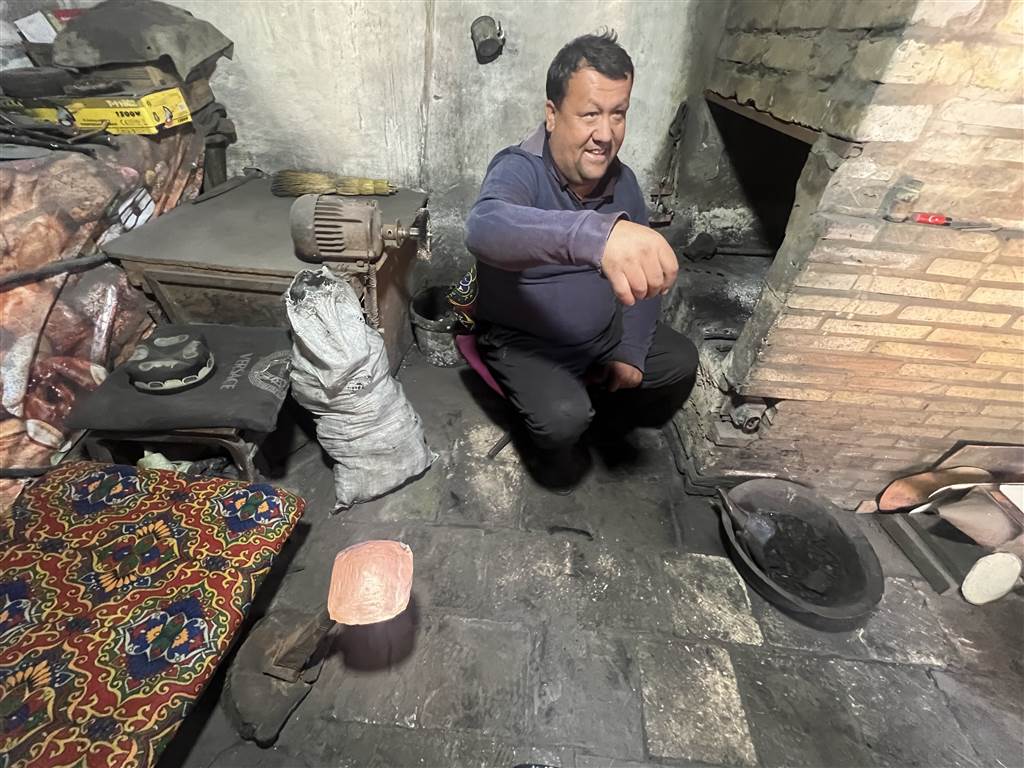
He fired up a piece of copper and hammered a copper bowl. We saw the process of crafts making unfold, from a piece of raw copper into the shape of a bowl, with hand pounded hammer prints on the craft. This style is very much in vogue at the top end furniture stores.
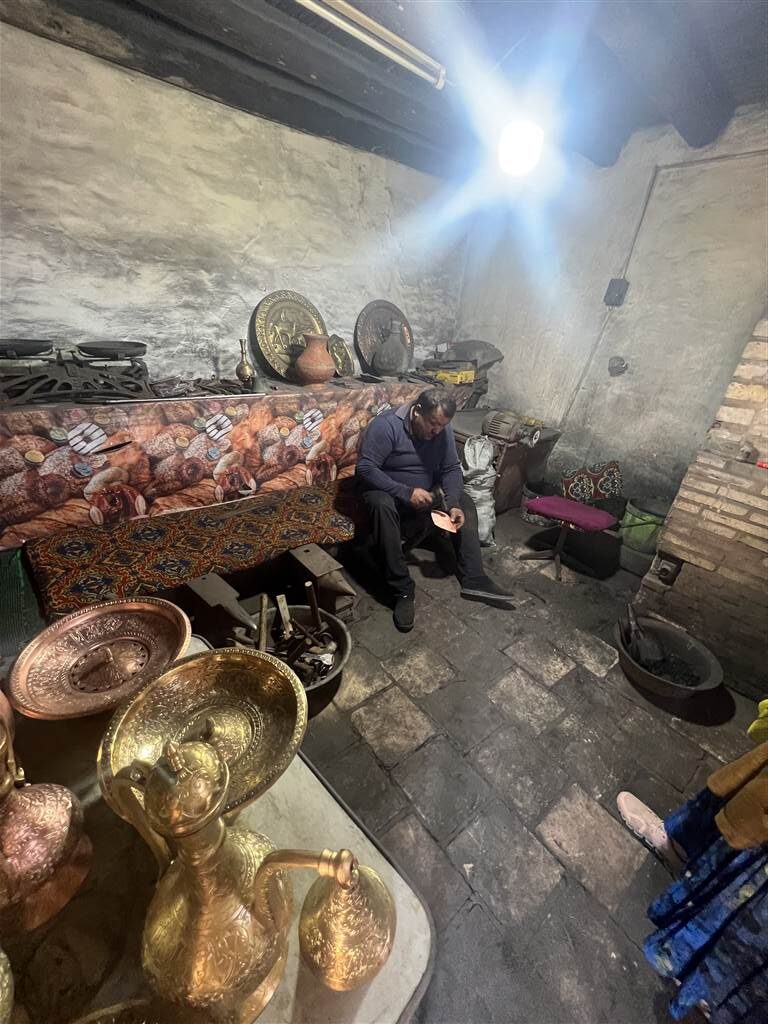
We were thankful for this incredibly interesting demonstration of his copper craft. We also understood that, to be able to suppress the shopkeeper’s instincts to sell his products, and welcomed instead the tourists into the viewing and videotaping of the process of his craftsmaking, it probably took some well-intentioned training by the authorities. For that we surely were grateful.

We had a coffee break at a nice café with an al fresco seating area facing a beautiful view of Khiva. The café’s name is now lost on me, but I do remember rather distinctly that it was located on Pahlavon Mahmud Street.
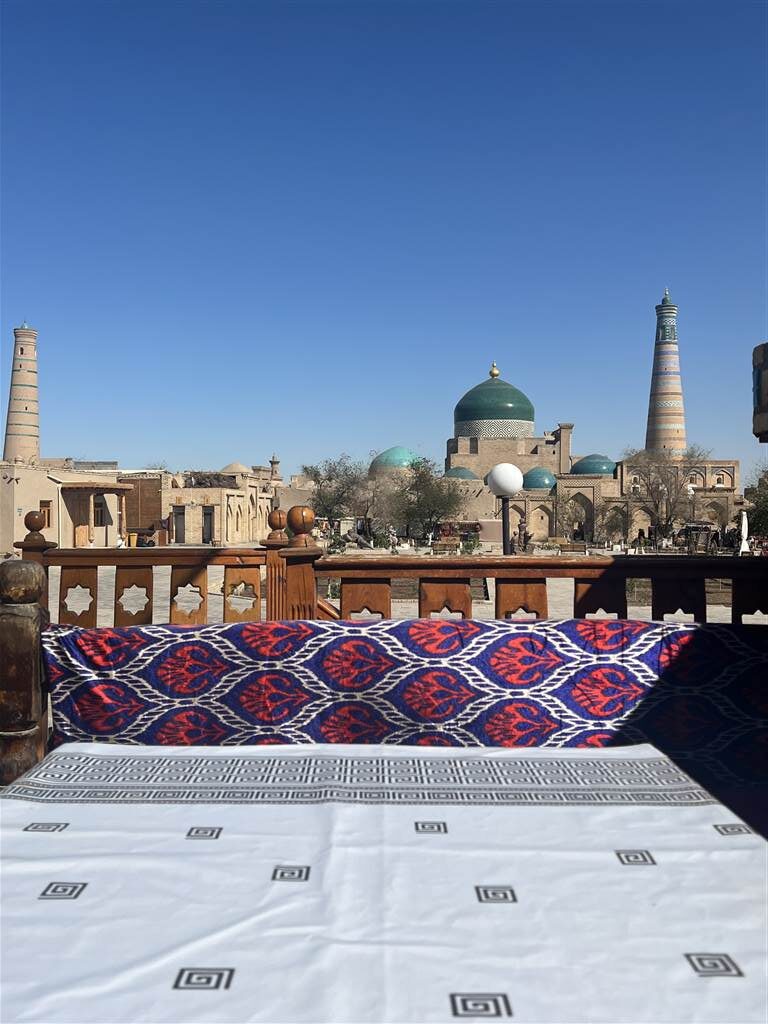
The Pahlavon Mahmud Complex
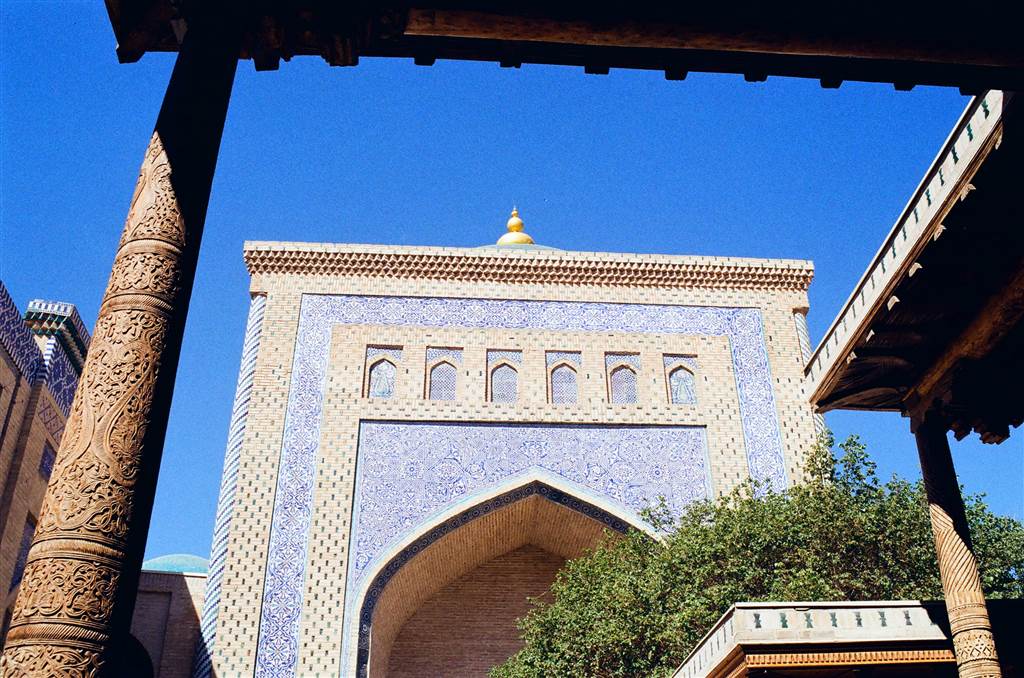
As said before, there is a separate fee to enter the Pahlavon Mahmud complex, and we decided not to see it. Suffice to say, that Pahlavon Mahmud (1247-1326) was a poet, humanist and craftsman, whose work and poetry were recognized during his own lifetime. Khiva’s rulers commemorated him with this building, and it is supposedly very beautiful with exquisite turquoise interiors. This structure also stands upon the little craftsman workshop in which he was buried, as according to his will.
The Kunya Ark
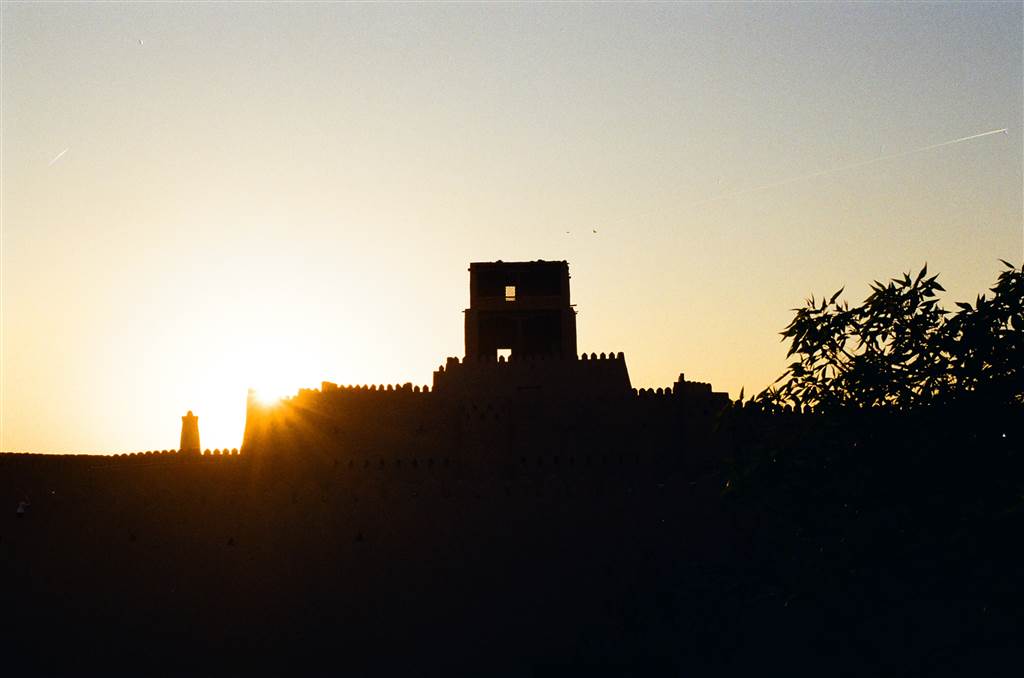
Dusk might befall upon us in an hour or so. We somehow wandered into the Kunya Ark area. We made our way up the Ark and found gems. There were courtyards there with turquois tiled walls and long wooden pillars and decorated wooden eaves, sights that were quite a bit different from the historic buildings that we had seen prior to this point.
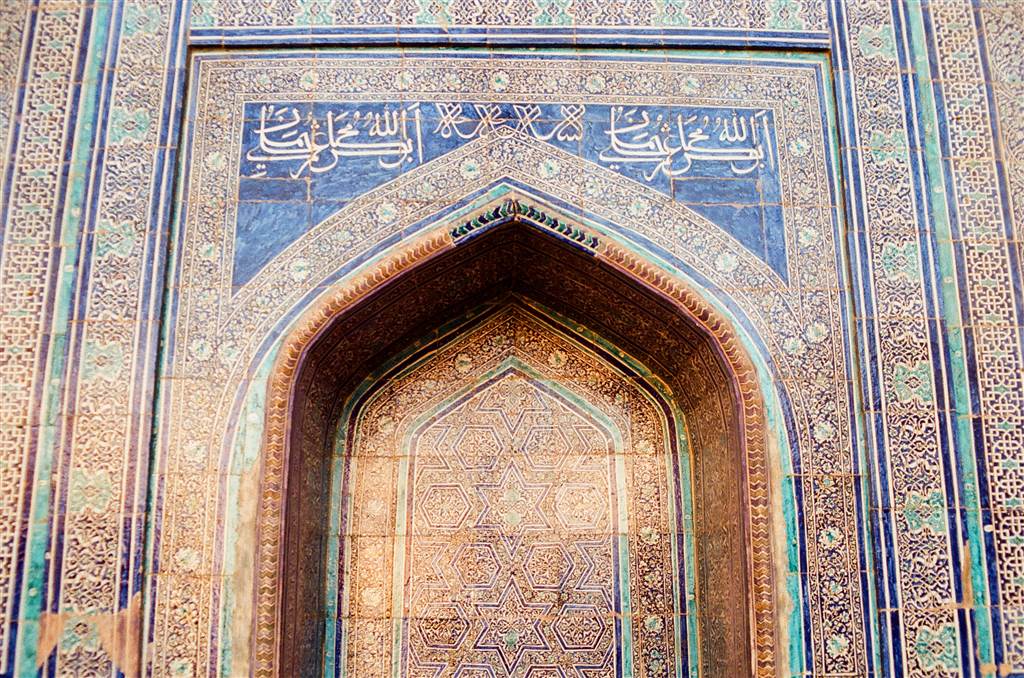
We figured that we did get our share of turquois décor here, despite our decision against seeing the Pahlavon Mahmud Complex for an additional fee.
There were not so many tourists and we took plenty of photographs.
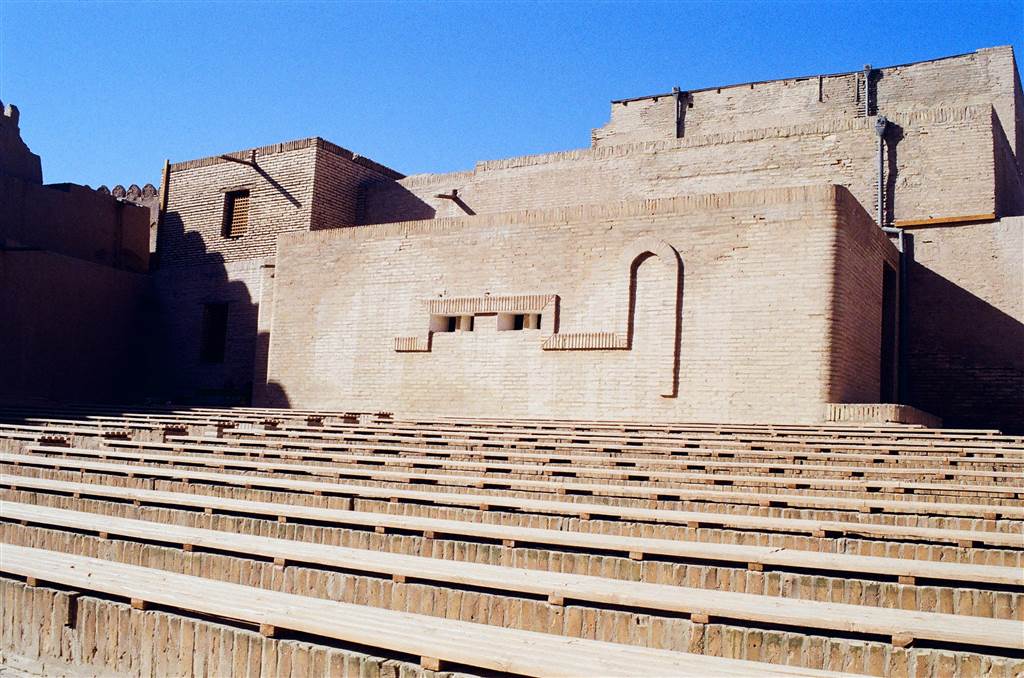
Like the Ark of Bukhara, the Kunya Ark was where the rulers of Khiva actually resided, as such it was as much a defense structure as it was a residential neighborhood for the royals. Built first in the 12th century, the Kunya Ark meant “Old Fortress,” as opposed to the Tash Khauli that was built on the East Gate later.
The structures that stand today at the Kunya Ark date to the 18th and 19th centuries, although the earliest foundation of the Kunya Ark are 5th century structures. The fortified palace was built in 1686 by Aranghan Khan. However, the palace fell into disrepair after the royals moved to the Tash Khauli.
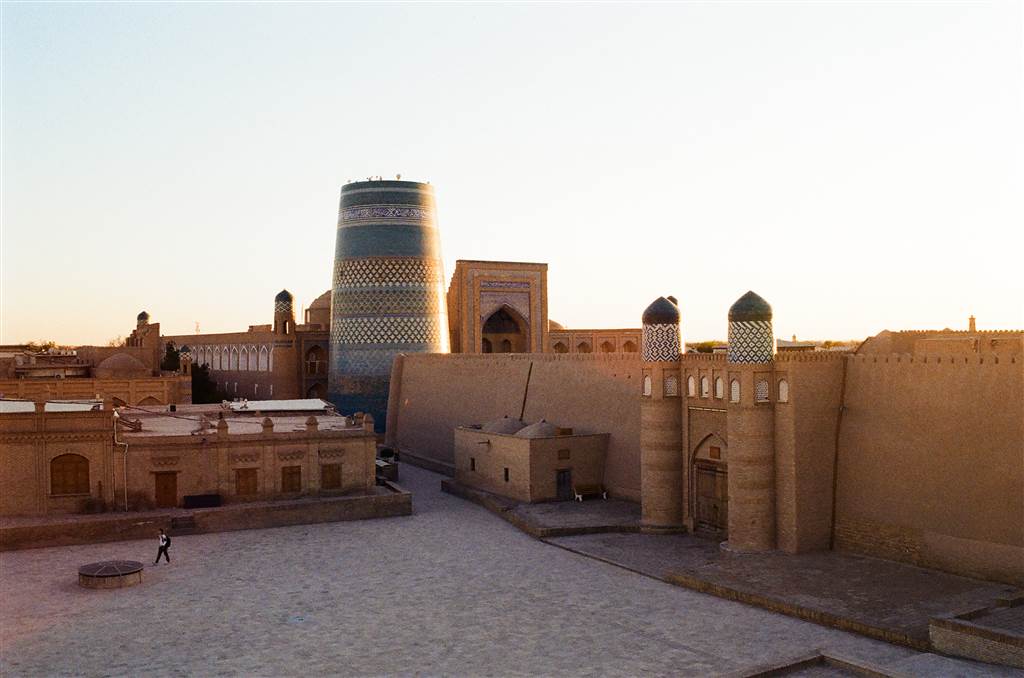
Because the Kunya Ark was once the residence of the khan’s, the structures there were intended to serve practical purposes. The chambers there served as mosque, reception hall, powder mill, arsenal, mint, harem, kitchen, stable, guardhouse and more.
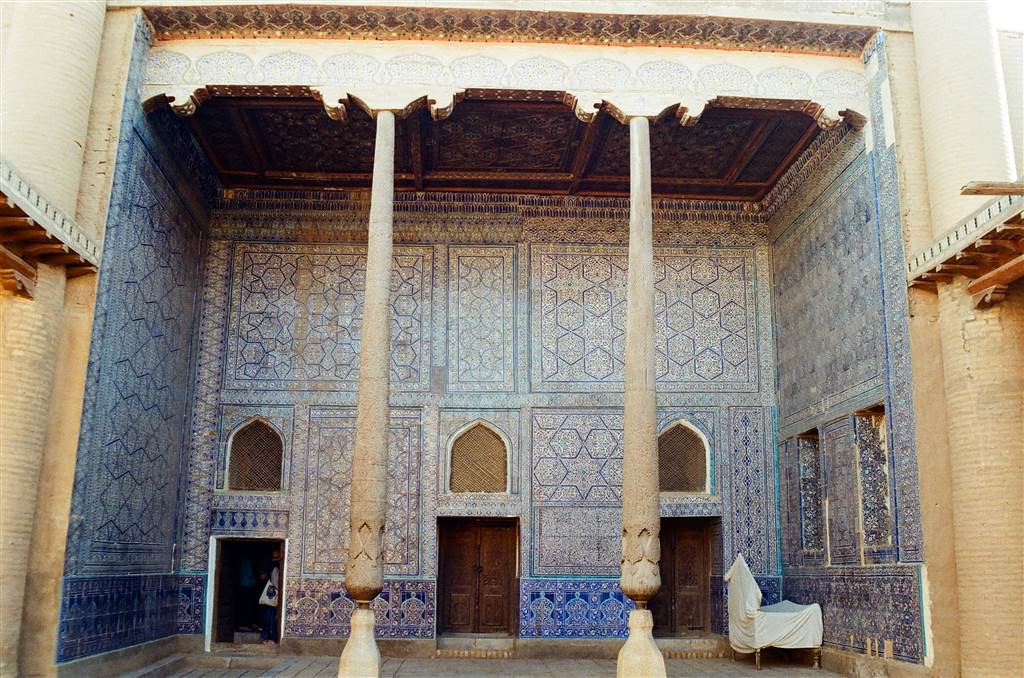
The restored reception hall shows elaborate interior décor and beautiful turquoise in the outside. The throne room was not too big, but it does show the glory with which the khans received their visitors.

A large quantity of relics have been excavated from the sites here, confirming the historical sources that described the life here as early as the 13th and 14th centuries. These relics included glazed and unglazed ceramics, an old well, hearths and more.
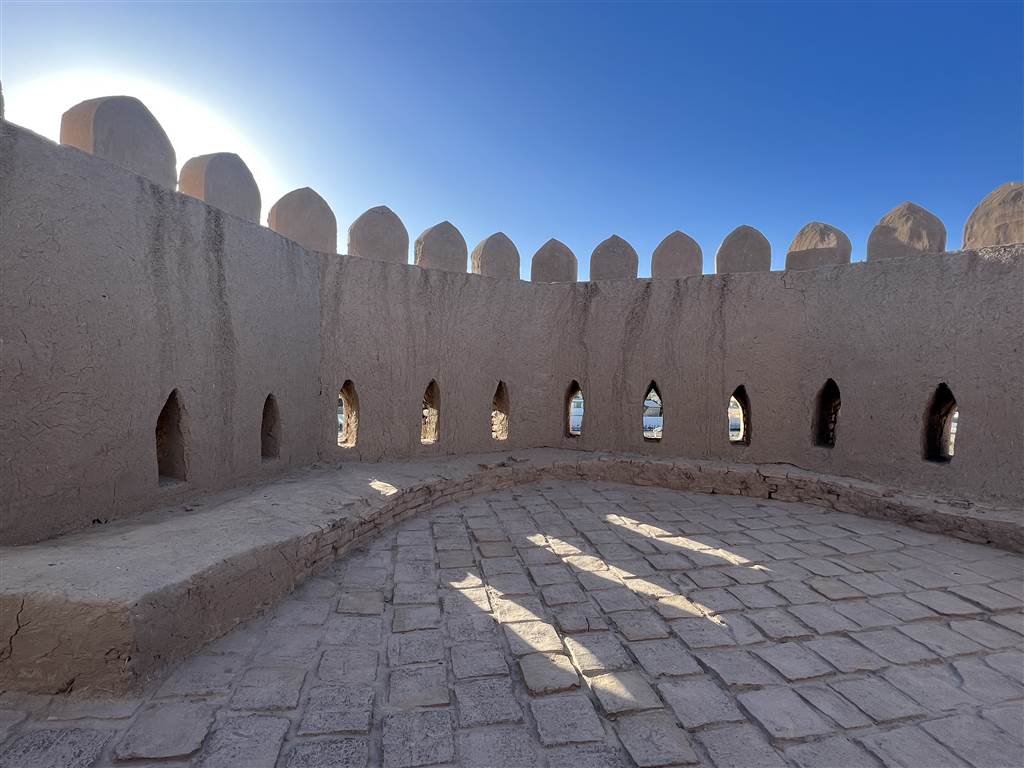
The structures that are still standing now host a museum, and we took a quick look at the exhibits. The former mint is now the museum covering the history of the currency (both in Khorezm and in Uzbekistan).
Khiva at Dusk
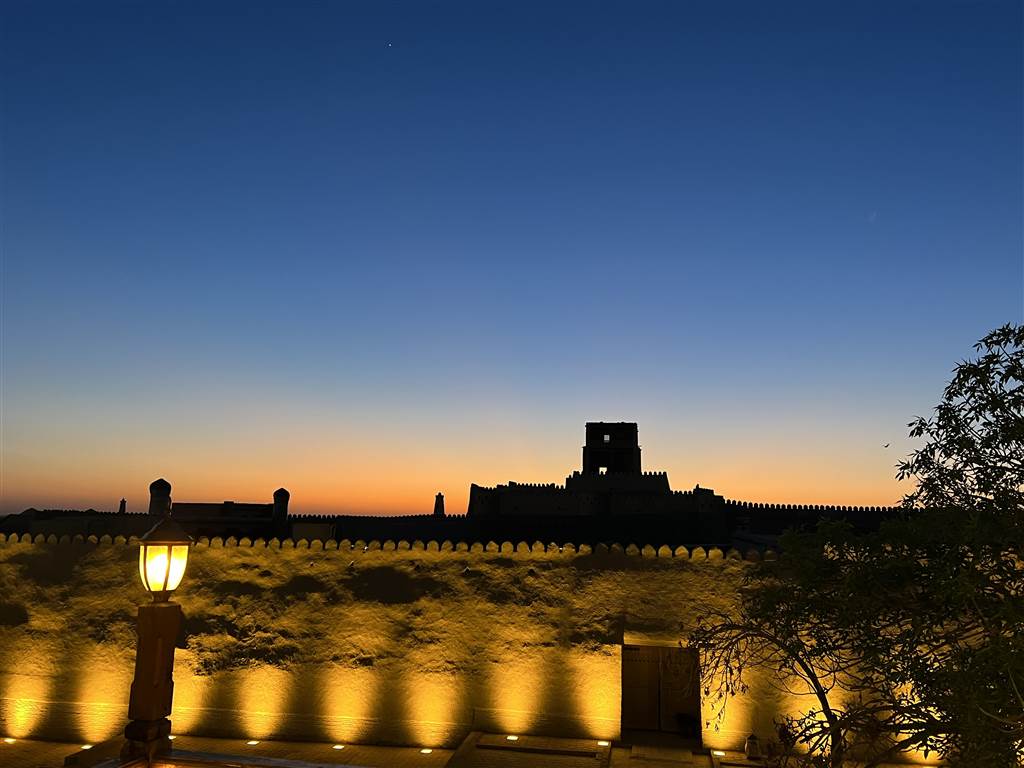
We spent maybe an hour, or a little more, enjoying the Kunya Ark with its stately stature. We spent a bit of time at the fortress and watchtower area, for that is where one can see all of Khiva beneath the perfect azure of the sunny day.
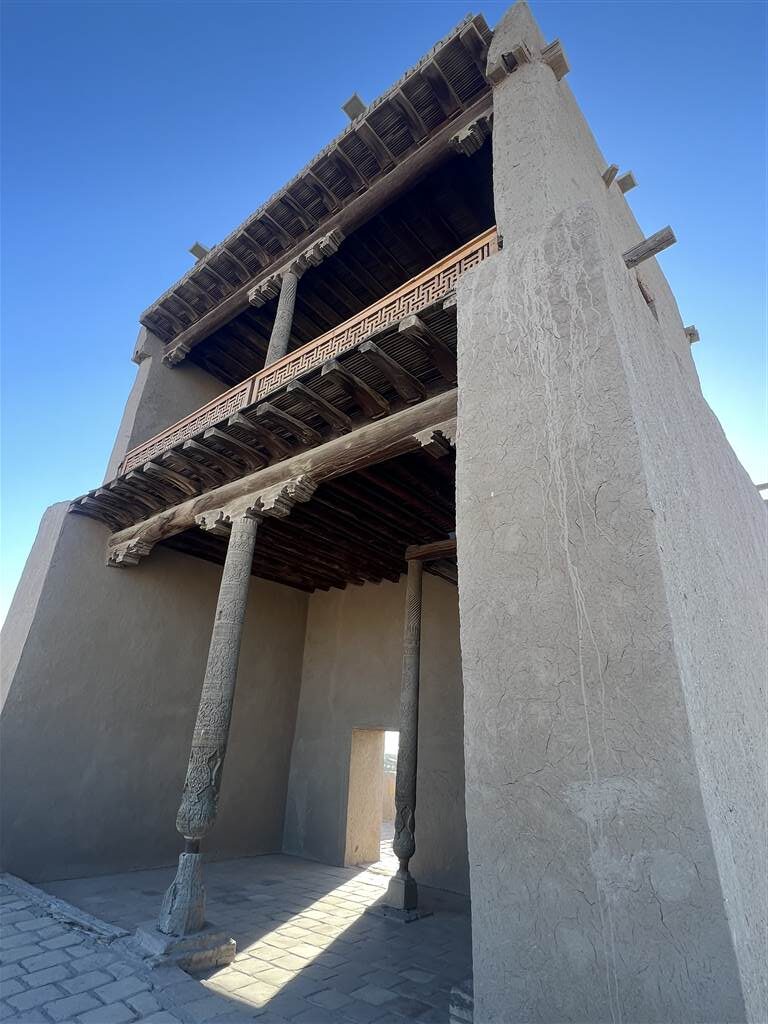
Our plan was to enjoy more of the dusk views at the nearby Terrassa Café.
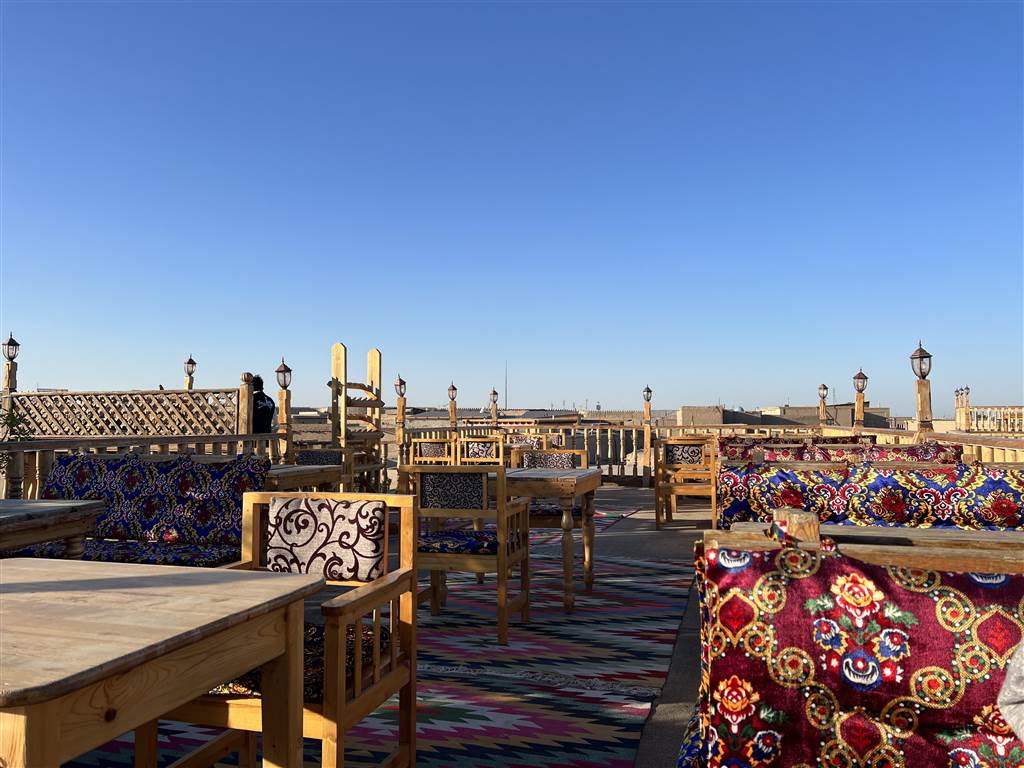
At the Terrassa Café you must secure two things. First, it goes without saying that you must secure your table. We wanted sunset viewing so I were there quite early, at around 6pm, to get a table on the roof.
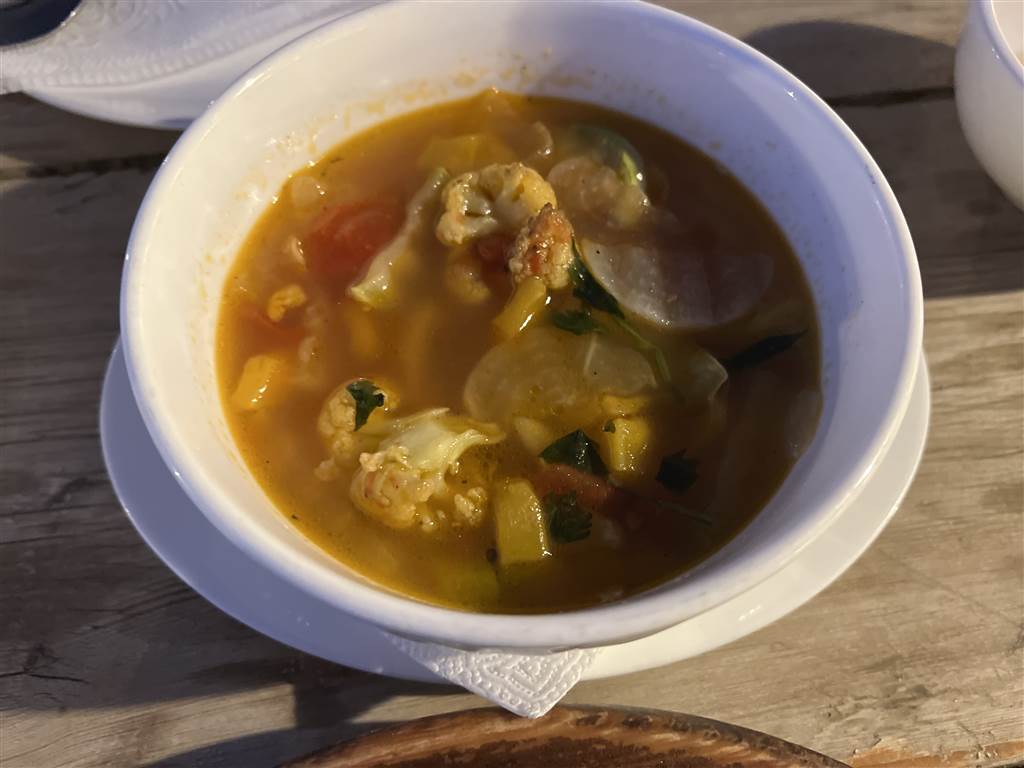
Secondly, and perhaps more importantly, you must secure a blanket. Khiva becomes very cold at night, and we were literally shivering through our dinner, despite having the blankets. To our surprise, the roof dining area was actually not full at all, perhaps it was exactly due to the cold.
And we saw both the Kunya Ark and all of Khiva morphed in colors as the dusk befell. That concluded our only full day of sightseeing in Khiva. And this was one of the most savored memories in our trip to Uzbekistan.

Sources
Descriptions on site at the historic monuments in Khiva.
Central Asia Guide, The Kunya Ark Fortress.
Sophie Ibbotson, Uzbekistan, Bradt Travel Guide (2020).

